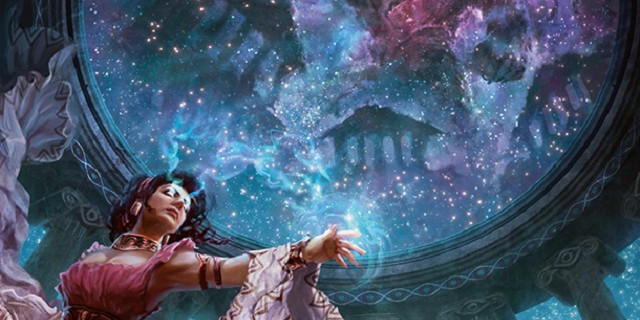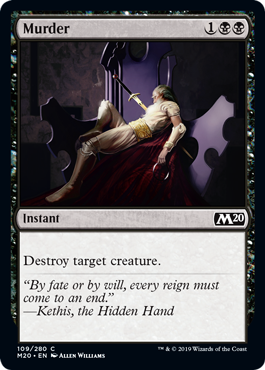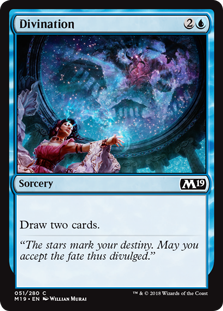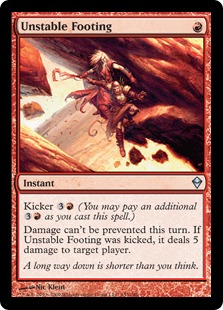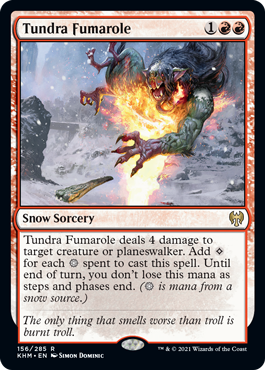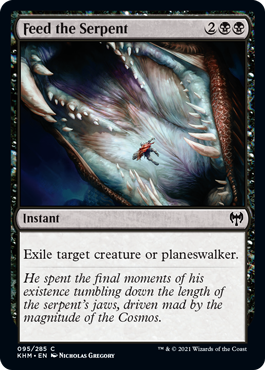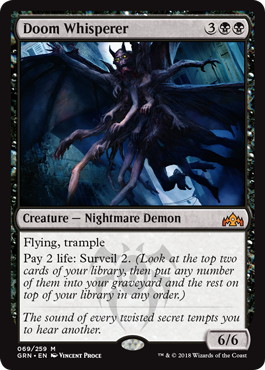Introduction
Among beginners, or people who mostly play constructed, Sealed is often depicted as a luck-based format, where your success correlates highly with the quality of the rares and mythics you open.
When you start talking to people who have some actual experience, it quickly becomes obvious that there is more to it. You realize that Sealed has, indeed, a lower barrier to entry than a Draft or Constructed (anyone can succeed when they open a 《Koma, Cosmos Serpent》 and repeatedly draw it), but also a very high ceiling for how to perfectly optimize your pool.
Over time, you identify classes of cards that are stronger in Sealed than anywhere else: hard removal, various sources of card advantage, mana fixing. You learn how to adjust your deckbuilding and play style to what most Sealed decks look like: a few scary bombs, removal, a semblance of a curve, and all the filler you can find in the desired colors. Avoiding cards that have a very little individual impact, or that would require a very synergistic build becomes second nature.
However, perhaps because the idea of Sealed being a luck-based format is so ingrained, most guides that are written about Sealed focus on the fundamentals. So, as a player who has already reached that stage, it’s quite hard to find the resources to improve your winrate and understanding of Sealed even further.
Moreover, we Frenchies love playing Limited and have developed a lot of concepts over the years, some of which probably never left the cocoons of our little Boot Camp and Discord servers.
I would like to assume that whoever is reading this already understands why 《Murder》, 《Divination》, and 《Mind Rot》 are good (though not equally good) Sealed cards, and……go deeper.
1. Your Mana is Bad
Let’s kick things off with the basics.
Manabases in limited are usually pretty bad. There is a shortage of dual lands compared to constructed and the mana costs are not necessarily less demanding.
Based on Frank Karsten’s holy tables, in order to reach a 90% probability to be able to cast a 2-drop on turn 2 assuming you have two lands, you would need 9 sources out of a 40-card deck. Most limited decks play between 16 and 18 lands and 2-drops of two different colors, so you can see this requirement is already not trivial. Now, if you want to cast a double-colored 4-drop, which is a common occurrence, the number goes up to… 11 sources (closer to 10, but higher). Casting two 2-mana spells of the same color on turn 4 is exactly as likely, and something you want to do all the time!
This issue is actually even more serious because when you decide to keep your opening hand or not, you won’t have seen as many cards, so if you want to be able to keep a hand without gambling on drawing your second color, you need as many sources for your first play as you would need for a 1-drop on the play……which is 10. Most limited manabases already don’t support that.
As a consequence, any dual land you can play in your deck is a big deal, and any splash that requires you to play one or several basic lands of a third color is a real cost. You will mulligan hands and miss beats in your curve because of it and there is value in making sure it happens less often. In a very simple way, playing more lands can be a good workaround, and that’s why mana sinks matter. A very good reason not to lower your land count, even with a low curve, is that you won’t be able to curve out for color reasons, so I’d rather play 17-18 with mana sinks than 15-16 without. (This also applies to Arena Bo1, where the doxa says you should play fewer lands, but misses that fewer lands mean fewer sources of each color, a factor the algorithm doesn’t account for.)
Obviously, I’m not telling you you shouldn’t splash your 《Kaya the Inexorable》 or play both 《Tundra Fumarole》 and 《Feed the Serpent》 given the chance: these cards are powerful enough that it can be correct to take extra risks for them. But the whole concept of a three-color deck without splash is an aberration to me.
There was definitely a time when playables were scarce enough that you had to resort to such extreme measures to find them, but modern limited Magic is filled with playable cards. In the past 10 years, I have opened maybe one or two Sealed pools where I couldn’t build a decent 2-color deck and none in the last 2-3 years that I can recall. Since you don’t have to, why put this extra burden on yourself?
You will already lose enough games to mana screws and floods and the playables you will gain in that third color are only marginally better than those in the other two, so there is no point in stretching your manabase to three main colors.
Now, regarding splashes, the usual definition of a splash (as stated, for example, by the 17lands website) is a package of 1 to 3 cards of extra color. Why does it make sense to splash if manabases are that bad? Well, there are certain cards that you won’t want to cast until late in the game, or that are powerful enough that you’re ready to wait some amount of time to cast them.
See where I’m going? Do not splash cards you want to be able to play on curve. It defies the very purpose of a splash, yet I still see people casting 《Dwarven Reinforcements》 from exile on turn 7 after they finally found their red source. Removal is acceptable, but it had better deal with late game threats; bombs can be worth it, but a creature like 《Dragonkin Berserker》 already flirts with the line.
Regardless of what you splash, keep in mind that the more off-color cards you play, the more likely you are to not be able to cast anything at some point in the game. Multiple splashes also have diminishing returns: it’s quite common that, if you’re already splashing white for 《Bound in Gold》 in your UG snow deck, that extra 《Demon Bolt》 should remain in your sideboard, because it doesn’t add as much value to your deck and creates additional risk.
For those reasons, unless I have a lot of fixing, I tend to shy away from splashing more than two cards at the same time. If I only have one, I’ll aim at three sources, which gives me a 70% probability to cast it on turn 6 on the draw (note that it’s still quite low); and the more I have, the more mana sources I’ll look for.
Finally, because of how probabilities work, adding extra sources of color matters less and less the more sources of that color you already have. This is a notion that even experienced limited players can have a hard time grasping. When you already have 9 sources of the main color, adding the 10th only increases your odds to have one in your opening hand by……3%. In comparison, the 4th source for your splash makes you 10% more likely to cast the card by turn 6. This both increases the value of certain thresholds and, interestingly, decreases the value of being mono-colored, as opposed to heavily based on a color with a secondary one.
That last point is more about draft since you very rarely have the incentives and material to stick to only one color in Sealed, but I often see people asking if they should play 3-4 cards of a second color or “go monored”, so I figured I’d drop a word of advice. There is something aesthetic about monocolored decks that makes people want to play them more than they mathematically should.
2. Sealed has a Metagame
As I mentioned in my intro since players who want to get better at Sealed are usually given the same advice, the decks they build tend to look the same: slow midrange decks with (too) many splashes and as many bombs, removal, and card advantage sources as they can find.
The problem is, not all pools are created equal, so it can’t be a winning strategy for everyone.
Don’t get me wrong, I’m a big believer in the idea that very few Sealed pools (5%?) are truly atrocious, just like very few can’t be beaten by the average one. But it’s still an illusion to think you can apply the exact same recipe to every pool and win just as much each time.
Imagine you’re testing for a Historic tournament before 《Uro, Titan of Nature’s Wrath》’s ban (sorry to plunge you back in such dark times) and you really enjoy Sultai. Unfortunately, you don’t own any 《Doom Whisperer》 and can’t afford to spend money on it. You know the field you’re preparing for is pretty stacked, so a lot of people should be on Sultai too (because……it’s the best deck) and they will have found that 《Doom Whisperer》 is the mirror breaker. What do you do?
The answer, in this case, is that you shouldn’t play Sultai, but rather something that targets that particular build of Sultai. Maybe Gruul with 《Ahn-Crop Crasher》? The exact answer doesn’t really matter here. My point is, if you play Sultai without 《Doom Whisperer》 in a field where everyone else has them, you’re just going to get crushed, so why not try to attack from a different angle?
Sealed is no different in that regard: it has a metagame of its own. Just because there is more variation in the lists doesn’t make it any less foolish to run the same archetype as everyone else when you have a clearly worse list than the average player.
You could object that maybe, the slow-midrange-with-(too)-many-splashes strategy is so superior to the others that even a bad version of that deck must be your best bet to succeed. There might be some Sealed formats where it’s true, but Kaldheim isn’t one of them.
For that argument to hold, the alternatives need to be either very bad or impossible to reconstruct with six-packs worth of cards (as opposed to the 24 you pick from in draft): in Kaldheim, red and white are pretty deep colors and the number of equipments is the limiting factor. If you have three or more of them in your pool, any curve creature will do the trick, and there are a bunch of random curve creatures, which makes it quite easy to assemble a functional aggressive deck.
Boros Equipments is just an example, I’ll give you some others; but more broadly speaking, when you have the same gameplan as your opponent but worse, you’re actually helping them enact their gameplan. Don’t aim for the late game when you don’t have the tools to win it because that’s what you’re “supposed to do” in Sealed; rather, try to read the metagame and adjust to it.
Gauging your bombs and overall late game power relative to everyone else’s requires some specific knowledge of the format. One thing you can do, if you don’t have time to build a lot of Sealed pools, lists all the best bombs the same way you would list instant speed tricks and removal, and memorize them.
You can even do it by tiers with, let’s say, the most broken and hard to fight off in tier 1 (《Kaya the Inexorable》, 《Koma, Cosmos Serpent》, 《Starnheim Unleashed》), the very good rares (《Blood on the Snow》, 《Waking the Trolls》, 《Alrund’s Epiphany》……) in tier 2, the above average but not insane ones (《Birgi, God of Storytelling》, 《Jorn, God of Winter》, 《Cosmos Charger》……) in tier 3……A good criterion when you’re unsure of what a particular “bomb” is worth is how resilient it is to common interaction.
For example, 《Eradicator Valkyrie》 would be somewhere between the cards I mentioned for tiers 2 and 3 because yes, it’s very impactful when it sticks, but still trades with a lot of commons.
Aside from bombs, there are key commons you should look for, that either cleanly deals with most bombs or help you dig towards your bombs and answers: 《Behold the Multiverse》, 《Feed the Serpent》, 《Bound in Gold》, and 《Sarulf’s Packmate》 (in that order). 《Demon Bolt》 is not far behind those, but doesn’t kill the biggest threats; 《Glimpse the Cosmos》 can do a 《Behold the Multiverse》 impersonation if you have enough giants, changelings included.
If your bombs are not great and you don’t have at least two copies of this set of commons, you should question your ability to grind out other midrange decks. You might wonder why 《Behold the Multiverse》 and 《Sarulf’s Packmate》 are two cards apart while being the two best commons in draft. The reason why I don’t love 《Sarulf’s Packmate》 that much in Sealed (although I’m still delighted to open some!) is that the 3/3 body gets blanked more easily by the mid-game creatures people are playing. When the board stalls, as it often does, digging four cards into your deck is way more powerful than one card with an additional body that will be relevant at some point, but not by itself.
- 2021/02/26
- Going Deeper in Sealed – Part 2
- Jean-Emmanuel Depraz


